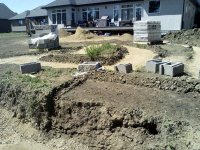From what i seen,,, and what everyone is yielding or comparisons is 400 watts of cob is like a 600 watt Hid . i think 835 watts of cob is compatible to a DE unit 1150 watts 1215 watt nanolux DE is a whole new ball game .. It grows trees and penetrates like a MOFO
Its not unheard off Nano's pulling 3.5 per
I truly have yet to see cob go at VS DE's or even grow a tree all of them are SOG .
Most side by sides like green genes was mogul and the Cob did not beat the Hid in yield, then again when it comes to testing you need grower unbiased
If it was a DE it would of destroyed the cob unit
People also have to realize something also for instance i will be running 52 percent efficient would anyone know what the other 48 percent is other then heat ???
the more efficient you make them i less yields it will produce
Cobs are most efficient under driven
Vero's on the other hand are more efficient when Drive them or clock em
The only good thing about these is there efficient , and suppose to last 50,000 hrs that is the real selling point now again everyone looks at manufactures graphs etc these are made to look good ..
We need to have growers test every 6 months there cobs as how it might be degrading
Reason i am making these is for supplemental vertical lighting and possible pre veg room
PPFD is all that matters when it comes to plants. Pound for pound a COB unit can and will compete with a gavita. If you match them accordingly and they are matching PPFD, the yields will be the same. Other factors come into play like points of light source, heat and spectrum, which in my opinion cobs have that advantage. Time will tell, but you'll likely see the industry shift pretty hard into leds as the price per watt drops more.
Next month I will be doing a journal with 24 cxb3590 driven at 1.4a each in a completely dialed sealed room. The proof is in the pudding and I plan to be completely impartial. If the results go well, I plan to do a head to head against some DEs for the run after that.
You may also find this video interesting: https://www.youtube.com/watch?v=o3tBQEH4lsE






